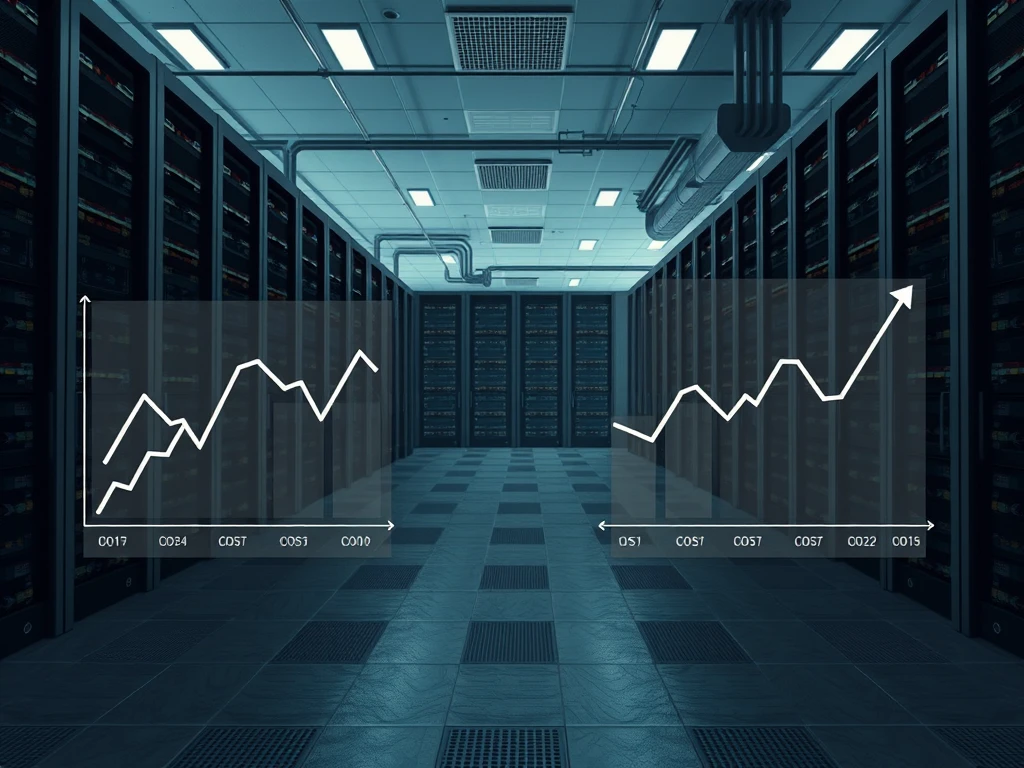TeraWulf Faces Severe $61.4M Loss in Q1 2025 Earnings Report

For those following the volatile world of cryptocurrency investments, the latest financial reports from major players like TeraWulf offer crucial insights. The company recently released its Q1 2025 earnings, revealing a significant widening of its net loss, a development that mirrors broader challenges currently impacting the entire Bitcoin mining sector.
TeraWulf’s Q1 Earnings: A Deep Dive into the Numbers
Mining firm TeraWulf reported a net loss of approximately $61.4 million for the first quarter of 2025. This figure represents a substantial increase from the $9.6 million net loss recorded during the same period in 2024, indicating a worsening financial performance year-over-year.
Key figures from the report:
- **Q1 2025 Net Loss:** $61.4 million
- **Q1 2024 Net Loss:** $9.6 million
- **Q1 2025 Revenue:** $34.4 million (down from $42.4 million in Q1 2024)
- **Q1 2025 Cost of Revenue:** $24.5 million (up from $14.4 million in Q1 2024)
- **Cost of Revenue as % of Income:** 71.4% in Q1 2025 vs. 34% in Q1 2024
As you can see, revenue decreased while the cost of revenue rose sharply, squeezing profit margins significantly. This trend highlights the difficulties faced by TeraWulf in maintaining profitability in the current environment.
What’s Behind the Challenges for the Crypto Mining Industry?
TeraWulf attributed its decreased revenue and increased losses to several factors that are also affecting the wider crypto mining industry:
- **Bitcoin Halving Impact:** The reduction in the Bitcoin block subsidy from 6.25 BTC to 3.125 BTC per block mined immediately cut the primary revenue source for miners in half.
- **Rising Network Difficulty:** As more powerful machines join the network, the difficulty of mining a block increases, requiring more computing power and energy for the same reward.
- **Increased Operating Costs:** Factors like rising energy prices, maintenance, and potentially severe weather impacting facility operations contribute to higher expenses.
- **Geopolitical and Trade Tensions:** Macroeconomic uncertainty and potential trade tariffs on mining hardware like ASICs can drive up equipment costs, impacting expansion and competitiveness, particularly for US-based miners compared to international competitors.
Miner Strategies Amidst Financial Pressure
Facing these pressures, the mining industry has shown shifts in strategy. March 2025 saw miners selling off a significant portion of their mined BTC – 40% – reversing a post-halving trend of accumulation. This was the highest level of miner liquidation since October 2024, a period also marked by high uncertainty surrounding the US presidential election.
Conclusion: Navigating a Tough Mining Industry Landscape
TeraWulf’s Q1 2025 earnings report serves as a stark reminder of the challenging conditions currently facing Bitcoin mining companies. The combined effects of the halving, rising operational costs, increased network difficulty, and macroeconomic factors are squeezing profitability. While the long-term outlook for Bitcoin mining remains tied to the price of BTC and technological advancements, the near-term requires miners to navigate a difficult financial landscape, potentially leading to further consolidation or strategic shifts within the sector.










